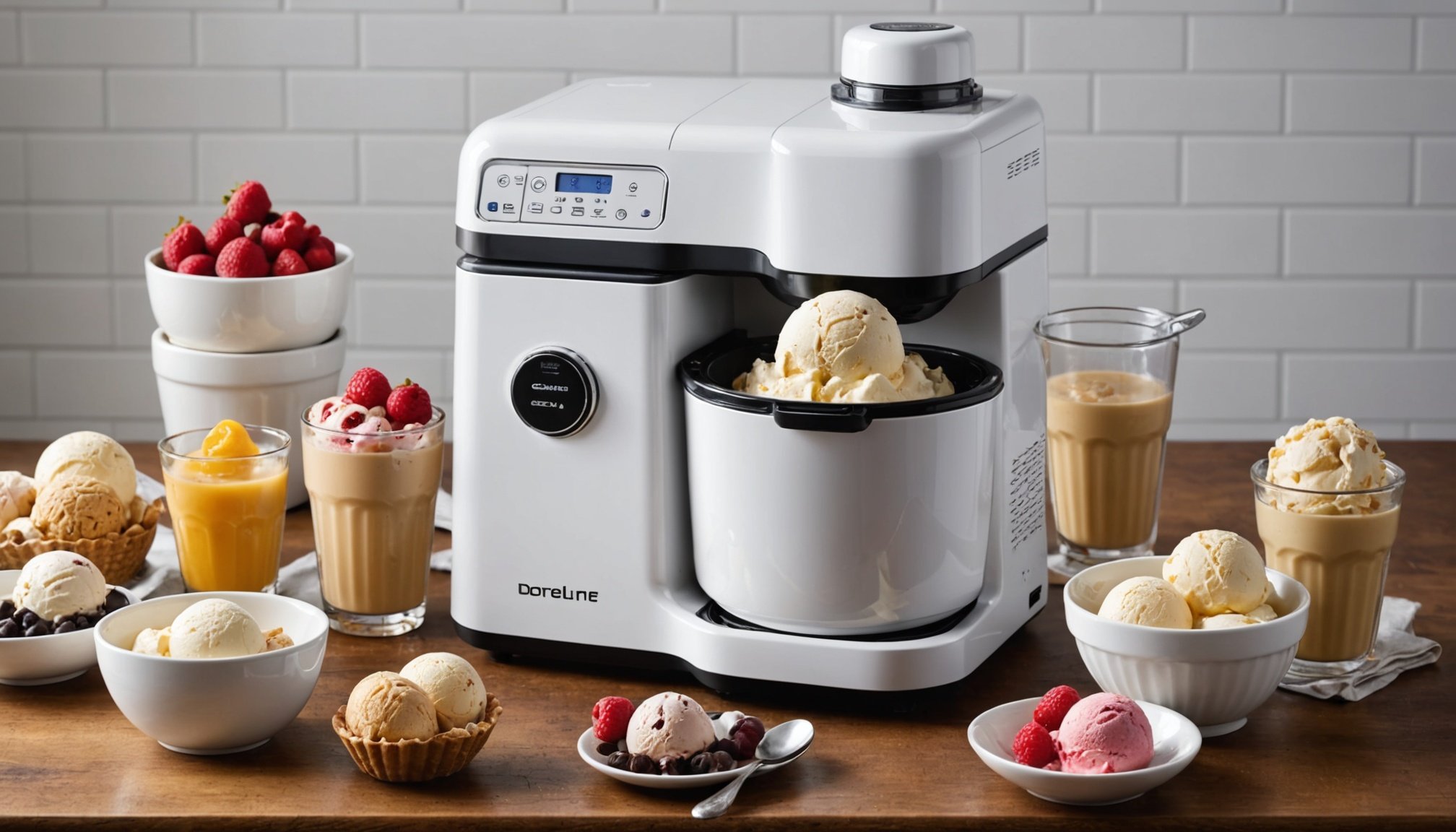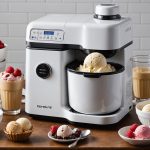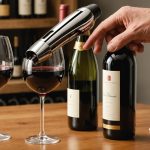Understanding Ice Cream Maker Types
Exploring the ice cream maker types can be a delightful journey into the world of sweet delights. When considering home ice cream makers, the primary categories include manual, electric, and compressor models. Each type offers unique features and caters to different needs.
Manual vs Automatic
Manual ice cream makers are often reminiscent of traditional methods. They require physical effort to churn the mixture, typically yielding a more hands-on experience. This can be enjoyable for some as it offers a slower, more involved process. Yet, it may not be suitable for everyone due to the effort required.
Also to read : Revolutionize your kitchen: enhance space and efficiency with creative revolving spice racks
In contrast, automatic models, such as electric and compressor ice cream makers, simplify the process significantly. Electric ice cream makers use a simple plug-in design. They necessitate pre-freezing the bowl, making them less optimal for impromptu cravings. Despite this, they are generally user-friendly and cost-effective.
Compressor ice cream makers further elevate the convenience factor. These highly efficient machines allow for instant mixing, eliminating the need for pre-freezing. While they are typically more expensive, their ability to produce smoother textures with little oversight is often worth the investment.
This might interest you : Unveil the Benefits of Silicone Kitchen Tools: Why They Surpass Conventional Utensils!
Choosing between these types depends on preferences for ease of use, time investment, and the desired texture of your frozen treat.
Key Features to Consider
When selecting from various ice cream maker features, understanding the essentials can significantly refine your choice. One primary consideration is capacity. If you frequently entertain or have a large family, opting for a bigger capacity machine saves time by producing more servings in one batch. In contrast, smaller capacities might suit those with limited kitchen space or individuals who desire occasional indulgences without excess leftovers.
Next, examine the freezing mechanism, which plays a crucial role in the machine’s efficiency. Manual models often rely on an ice-and-salt combination, which can be labor-intensive but traditional. On the other hand, electric home ice cream makers generally require pre-freezing the bowl, which necessitates planning. Conversely, compressor ice cream makers boast built-in freezing systems allowing immediate use, a sought after feature if you prioritize convenience.
Additionally, consider ease of use and storage, as some machines offer intuitive controls, while others might necessitate more manual manipulation. A model with clear instructions and straightforward assembly can enhance the overall experience. Finally, evaluate the ease of cleaning, particularly for larger or more intricate appliances, to ensure maintenance doesn’t become a chore. Making an informed decision tailored to your specific needs guarantees a more satisfying homemade ice cream experience.
Top Ice Cream Makers Reviewed
Embarking on the search for the best ice cream makers can transform your home-made frozen desserts. This section highlights standout models, comparing their features and performance based on user reviews.
Comprehensive Review of Manual Ice Cream Makers
Manual ice cream makers offer a nostalgic, hands-on experience. Many users appreciate the control they have over the churning process. Reviews suggest that manual machines are durable and often provide a rich texture due to slower churning. However, the physical effort required may deter some users, especially for larger batches.
Detailed Analysis of Electric Ice Cream Makers
Electric ice cream makers are praised for their ease of use and affordability. These models typically require pre-freezing of the bowl but compensate with straightforward controls and consistent results. Users frequently mention that they are ideal for those looking to make ice cream without much planning. However, the need to freeze the bowl in advance can be limiting.
Evaluation of Compressor Ice Cream Makers
Compressor models stand out for their convenience. They are highly regarded in reviews for producing smooth, creamy textures with minimal effort and no pre-freezing. Users often note that these machines are a significant investment but worth it for enthusiasts who value quality and frequent use.
Expert Tips for Silky, Creamy Textures
Aspiring to master silky, creamy textures in homemade ice cream? Both ingredients and techniques are pivotal. Start with a rich custard base—using high-fat dairy such as heavy cream or full-fat milk ensures creaminess. Consider incorporating egg yolks, which not only thicken the mixture but create a luscious mouthfeel.
Temperature control during cooking and freezing is another significant factor. Slowly heat the custard on a low flame to avoid curdling and achieve a smooth blend. Once cooled, ensure the mixture is thoroughly chilled before churning; this shortens freezing time and reduces ice crystal formation, resulting in a smoother texture.
When churning, monitor device operation. Over-churning can lead to a dense result, while under-churning leaves a runny consistency. Aim for a soft-serve state when removing from the ice cream maker, then let it firm up in the freezer.
Lastly, embrace ingredient diversity. Add syrups or purees for flavour depth but remember, alcohol or excessive sugar can alter freezing points, thus affecting texture. Achieving premium quality requires patience, attention to detail, and the right machine for desired results, ensuring an indulgent homemade experience.
Maintenance and Care for Ice Cream Makers
Ensuring your ice cream maker stays in top condition involves a few essential maintenance steps. Regular care not only extends the machine’s lifespan but also ensures consistently delicious results. Here are some cleaning tips to help you maintain your machine with ease.
Step-by-step Cleaning Guide:
-
Disassemble the Parts: Begin by taking apart all removable components. This includes the bowl, lid, and churning paddle. Consult your machine’s manual as each type may have unique assembly.
-
Wash with Mild Soapy Water: Wash the parts with mild soapy water to remove any leftover residue. Avoid using abrasive cleansers that might damage the surfaces. Rinse thoroughly to clear away soap traces and let parts dry completely.
-
Wipe the Exterior: Use a damp cloth to clean the exterior of the machine. Avoid submerging electric components in water to prevent damage.
For troubleshooting common issues, ensure your machine is on a flat surface and avoid overloading it beyond its capacity. If the motor struggles, double-check for blockages or improper assembly. Regular lubrication of moving parts minimizes performance issues.
By integrating these maintenance rituals, you ensure your ice cream maker is always ready to create your favourite frozen delights effortlessly.
Buying Guide and Budget Considerations
When navigating the world of ice cream makers, understanding your budgetary constraints and needs is pivotal. Establishing a budget first eases the selection process for either budget-friendly options or premium ice cream makers based on desired features and durability.
Budget-friendly models, often manual or basic electric versions, offer cost-effective solutions. They typically require more effort or pre-planning, such as pre-freezing bowls. While their features may be limited, they still yield satisfactory results for occasional use.
Premium models, like sophisticated compressor ice cream makers, provide unrivalled convenience and consistently high-quality textures. These machines are ideal for those who regularly indulge in homemade ice cream, offering features like built-in freezers and automatic operations.
For savvy shoppers aiming to find the best deals, consider keeping an eye on sales during holiday seasons or on retailer websites. Opting for refurbished units with warranties may also present opportunities to secure quality machines at reduced prices.
When weighing options, consider how frequently each feature will enhance your dessert-making, ensuring that your choice aligns not only with your budget but also with your culinary aspirations.











